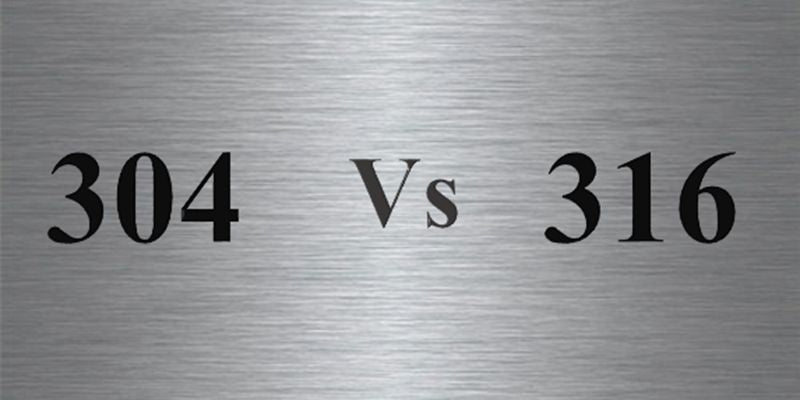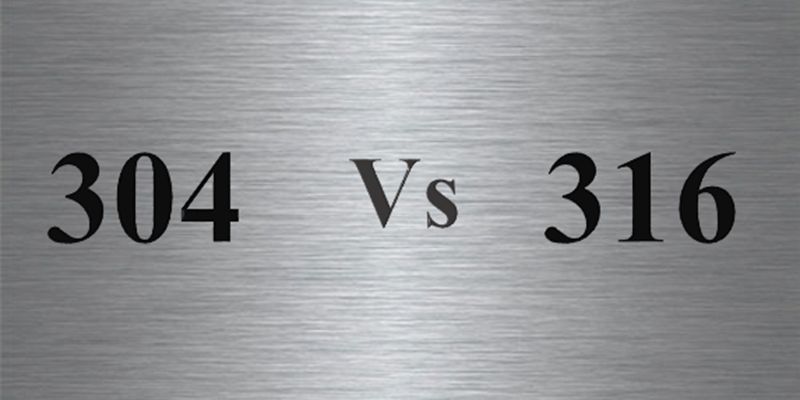
Many people are unaware of the complexities of comparing 304 stainless steel and 316 stainless steel and the implications for their applications. Both are austenitic stainless steel and are popular for their excellent resistance to heat, abrasion and corrosion, as well as their aesthetic value.
Due to the similarities between the two types of stainless steel, many people believe they have the same applications. This article compares 316 stainless steel and 304 stainless steel and shows their properties, applications, similarities, differences and their importance before choosing the right stainless steel for your project.
What is 304 stainless steel?
304 or 304 SS stainless steel is an austenitic steel that contains 18% chromium and 8% nickel (hence the name 18/8), as well as other alloying elements such as carbon, phosphorus, sulfur, silicon and manganese. It has good corrosion resistance and is considered the most versatile and commonly used type of stainless steel in sheet metal processing.
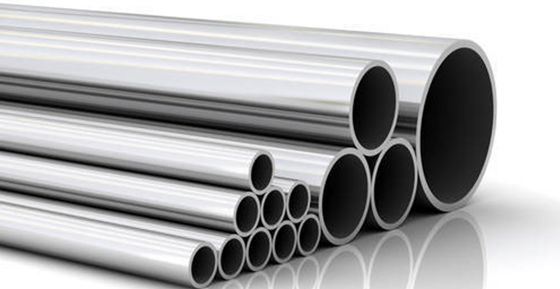
Characteristics
SS 304 has unique properties that make it suitable for various industries. Following are the important physical and mechanical properties of flat rolled product (plate, plate and coil):
- Melting point 1450°C
- Density: 8.00g/cm^3
- Thermal expansion: 17.2 x10^-6/K
- Elastic modulus: 193 GPa
- Thermal conductivity: 16.2 W/mK
- Tensile strength: 500-700MPa
- Elongation A50 mm: 45 min %
- Stainless steel hardness (Brinell): 215 Max HB
Forms
304 stainless steel has high formability and significant corrosion resistance. Therefore, it is used in the manufacture of various products in different sectors. Below are some of its uses:
Food industry
The food industry uses 304 stainless steel to manufacture fryers and food preparation tables. These products require an affordable material with corrosion resistance, heat resistance and excellent aesthetic value.
kitchen utensils
SS 304 is used in the manufacture of kitchen utensils and cutlery. It is a perfect material due to its malleability, heat resistance and abrasion resistance. Due to the growing desire for aesthetic kitchenware, 304 stainless steel has become an important material as it is also abrasion resistant.
Medical industry
The medical industry uses 304 stainless steel to manufacture trays and surgical instruments. Emphasis is placed on excellent formability and heat resistance (due to the need for heat sterilization).
What is 316 stainless steel?
316 or 316 SS stainless steel is the second most popular type of austenitic stainless steel and is composed of iron, 10-14% nickel and 16-18% chromium. The real difference between 316 stainless steel and 304 stainless steel is the presence of molybdenum (2-3%) along with other alloying elements such as carbon, manganese, and silicon.
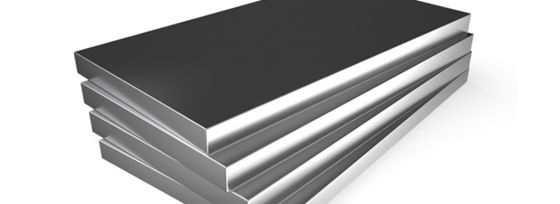
Characteristics
Physical properties
- Density: 8.00g/cm3
- Melting point: 1400°C
- Elastic modulus: 193 GPa
- Electrical resistance: 0.74 x 10-6 Ω.m
- Thermal conductivity: 16.3 W/mK
- Thermal expansion: 15.9 x 10-6/K
Mechanical properties
The mechanical properties depend on the type of 316 stainless steel. There are three categories: 316 Bars and Profiles (up to 160 mm thick), 316 Plates (up to 8 mm thick) and 316 Plates (8 – 75 mm thick). Below are the mechanical properties for each category.
- Tensile Strength (Mpa): 500-700, 530-680, 520-670
- Yield strength (MPa): 200, 240, 220
- Elongation A50mm: 40 Min%, 40 Min%, 45 Min%
- Brinell hardness of stainless steel: 215 Max HB, zero, zero
Forms
316 stainless steel is highly malleable and resistant to corrosion. Due to the molybdenum it contains, it is the most used material in the manufacture of parts for marine applications. Some areas of application of this type of stainless steel are listed below.
Naval industry
SS 316 is suitable for manufacturing parts such as boilers, rails and boat ladders due to its exceptional stability in environments containing chloride or sulfuric acid. In addition to corrosion resistance, it has good weldability and formability, which facilitates product manufacturing.
Water treatment product
Due to its heat resistance, SS 316 is suitable for manufacturing water treatment products such as boilers and water heaters. Malleability also plays an important role here as products have complex designs.
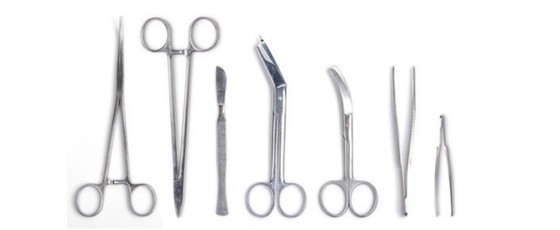
Medical and pharmaceutical devices
The medical industry uses 316 stainless steel for medical devices because of its malleability and heat resistance (necessary for heat sterilization). It is also suitable for pharmaceutical devices as they operate in different environmental conditions and are exposed to chemicals.
304 Stainless Steel vs. 316: differences
To effectively choose between 304 SS and 316 SS, you need to know their differences through comparison. Below you will find the most important differences between the two SS qualities.
1. Chemical composition
304 SS (Percentage): Carbon (0.07), Silicon (1), Manganese (2), Phosphorus (0.045), Sulfur (0.015), Nitrogen (0.10), Chromium (18), Nickel (8).
316 SS (Percent): Carbon (0.07), Silicon (1.00), Manganese (2.00), Phosphorus (0.045), Sulfur (0.015), Nitrogen (0.10), Chromium (16), Nickel (10) and molybdenum (2.00).
The main difference between 304SS and 316SS is the presence of molybdenum and the amount of chromium and nickel they both contain. These, in turn, are responsible for the different properties of stainless steel types.
2. Mechanical properties
Both types of stainless steel also differ in their mechanical properties, including yield strength, stainless steel hardness, and modulus of elasticity.
– Stretch limit
Yield strength is the maximum force you can apply to a material before its shape permanently changes. Therefore, the strength of the metal must always be subject to forces below the yield point. SS 304 has a yield strength of 215 MPa, while SS 316 has 205 MPa. Although the difference is small, it is important when machining to high tolerances.
-Toughness
This is the ability of a material to resist deformation, penetration and indentation. The right material must be hard enough to improve durability. It also needs to be hard enough to ensure a proper manufacturing process.
The hardness of 316 SS is 79 Rockwell B, while the hardness of 304 SS is 70 Rockwell B. Therefore, 316 stainless steel is more suitable for projects that require a hard material
-Modules of elasticity
Young's modulus is the relationship between stress and strain and how a metal responds to strain. The modulus of elasticity of 316 SS is 164 GPa, while that of 304 SS is 193-200 GPa. Therefore, SS 304 responds better to deformation.
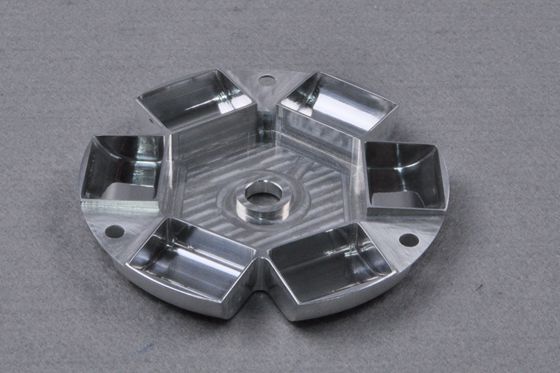
3. Corrosion resistance
In general, both types of stainless steel are resistant to corrosion. However, due to the molybdenum content in SS 316, it is more resistant to corrosion, especially to chloride or sulfuric acid. The corrosion resistance of 316SS also means you can clean it easily without worrying about the type of chemical.
4. Heat resistance
Heat resistance is another crucial factor when comparing 304 stainless steel and 316 stainless steel. Based on its melting points, 304 stainless steel has a higher melting range than 316 stainless steel (about 50- 100°F).
On the one hand, 304 stainless steel can withstand heat well. However, prolonged use at temperatures between 410 and 700 °C may cause corrosion. On the other hand, 316 stainless steel works well at temperatures above 700°C and below 400°C.
5. Costs
316 stainless steel is more expensive than 304 stainless steel due to the higher element content and the addition of molybdenum. Furthermore, the associated increase in corrosion resistance makes it even more expensive. On average, 316 stainless steel is 40% more expensive than 304 stainless steel.
304 Stainless Steel vs. 316: similarities
Due to their physical and mechanical properties, 316 stainless steel and 304 stainless steel are very similar. Both materials have the following similarities:
1. Magnetism
Both types of stainless steel are austenitic types of stainless steel. Therefore, they do not have magnetic properties when manufactured. However, they can be made magnetic through cold working or welding.
2. Abrasion resistance
Both qualities are abrasion and scratch resistant. This ensures that the material is not subject to oxidation or other phenomena. Furthermore, this is an important aesthetic value that many take into account, especially when manufacturing kitchen utensils.
3. Weldability
Weldability is the ability of a metal to be welded without deformation. This factor depends on the amount of carbon in a type of stainless steel, with stainless steel with a low carbon content having greater weldability. Both types have high and equal weldability due to the same amount of carbon present (0.08%).
4. Malleability
Malleability is the tendency of a material to deform plastically without affecting its capacity, such as: B. Narrowing (local thinning of the sheet) and cracking (breakage of the sheet). This allows sheet metal fabricators to work with materials and adapt them to a design. Both grades have a high degree of formability.
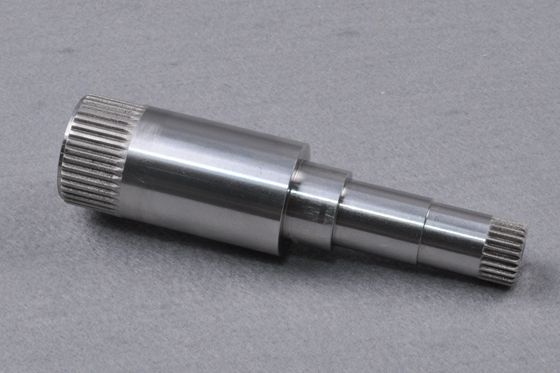
5. Durability
Durability measures the strength of a material and the load it can withstand. Both grades 316 and 304 are robust. This is evident in its metallurgical properties, anti-corrosion properties and heat resistance, which ensures its use in rigorous manufacturing structures.
6. Tensile strength
Tensile strength defines the energy required to split or stretch a material before it breaks. SS 304 and SS 316 have tensile strengths of 500-700 MPa and are therefore suitable for use under the same conditions.
304 Stainless Steel vs. 316: how to choose the right one?
In terms of utility, 316 stainless steel outperforms 304 stainless steel. However, 304 stainless steel is more popular in industrial applications. To choose the right stainless steel, you need to consider the differences between the two types of stainless steel. Below are some scenarios where both types of stainless steel are applicable and how to choose the right one.
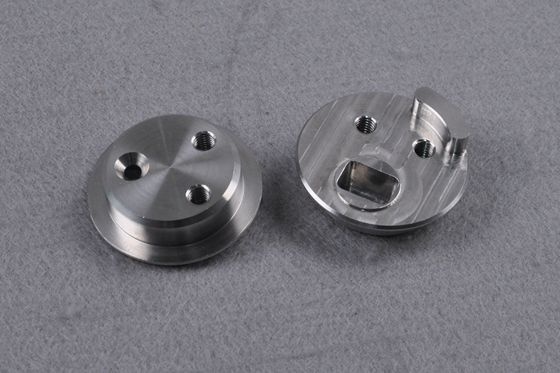
Saline/marine environment
The marine environment contains high levels of chlorides and sulfides. Therefore, the right material must have high corrosion resistance. Due to the presence of molybdenum, 316 stainless steel is the best material.
External use
Products used outdoors are also exposed to corrosion and rust. However, unlike the marine environment, there are fewer chlorides and other chemicals. Therefore, 304 stainless steel is the best choice here because of its corrosion resistance and low cost.
maintenance
Both types of stainless steel offer almost the same durability and aesthetics. However, 316 stainless steel is easier to maintain than 304 stainless steel. This is because there is less need to worry about the chemicals used in the cleaning process.
The operating temperature
Temperature can also increase the rate of corrosion. If there are high temperatures in the place of use, SS 316 is the best choice. Unlike 304SS, which can corrode at 425-860°C (797-1580°F), SS 316 can operate at temperatures above 843°C (1550°F) and below 454°C (850°F) no corrosion.
Cost effectiveness
Another factor to consider when choosing the right 304 stainless steel over 316 stainless steel is cost: 304 is the better choice as 316 stainless steel costs 40% more.
By tailoring your choices based on usage, environment, and cost, you can optimize them functionally and cost-effectively for your project benefits.
University Degree
304 and 316 SS are important steel materials in manufacturing due to their corrosion resistance, weldability, formability and aesthetics. Both are austenitic steels; however, they differ slightly in material composition. This difference in chemical composition is responsible for the difference in cost and corrosion resistance.
Upload your CAD file
Common questions
How to distinguish 316 SS from 304 SS?
You can't tell the difference between stainless steel types just by appearance. However, expose them to a solution that contains chloride or sulfuric acid. 316SS is resistant to these chemicals due to the molybdenum it contains.
Are 316 or 304 SS stronger?
Both materials are similar in terms of tensile strength. The main difference between the two materials is cost and corrosion resistance.
Will a magnet stick to 316 stainless steel?
Should not. Like other austenitic steels, 316 stainless steel is a non-magnetic stainless steel due to its high nickel content. Cold working or welding the material can make it magnetic. However, this is only the case after remodeling.
Is 316 stainless steel rust proof?
Yes, 316 stainless steel has rust and corrosion resistant properties thanks to nickel, molybdenum and chromium. Therefore, it is suitable for use in environments where rust and corrosion may occur.

